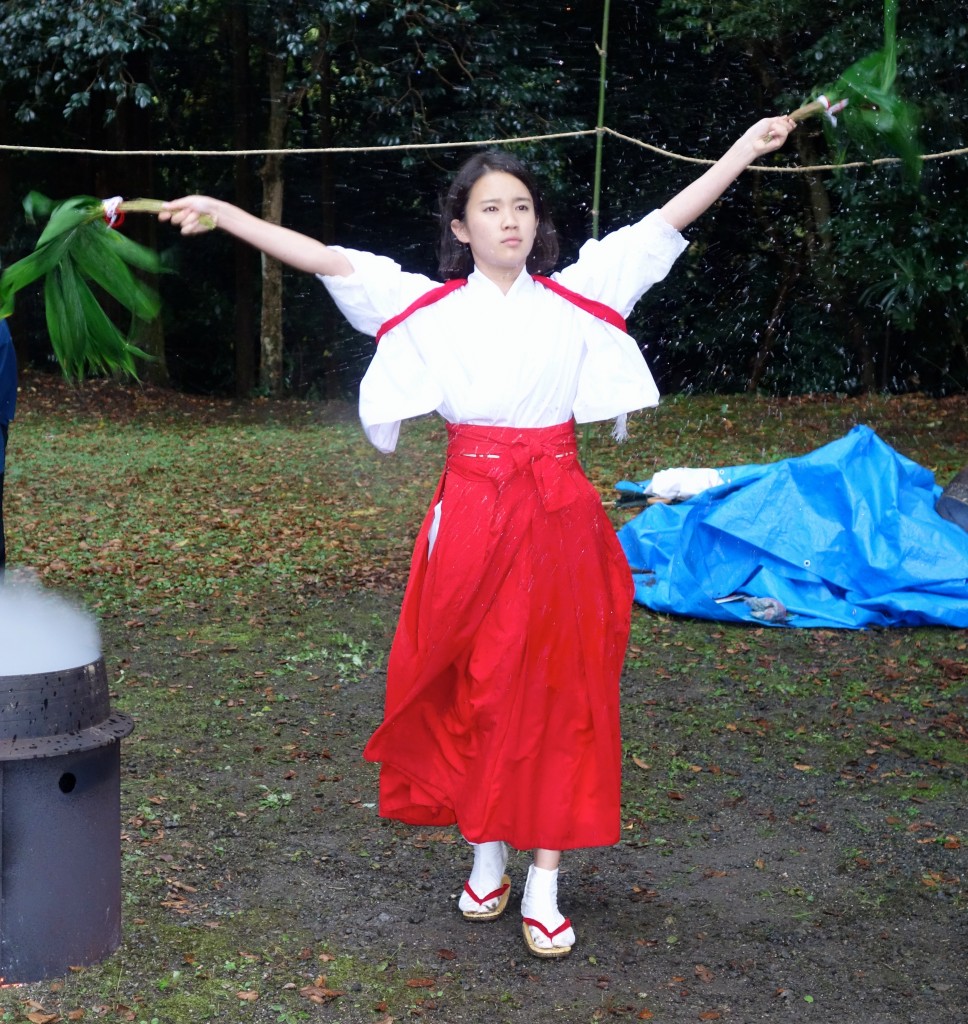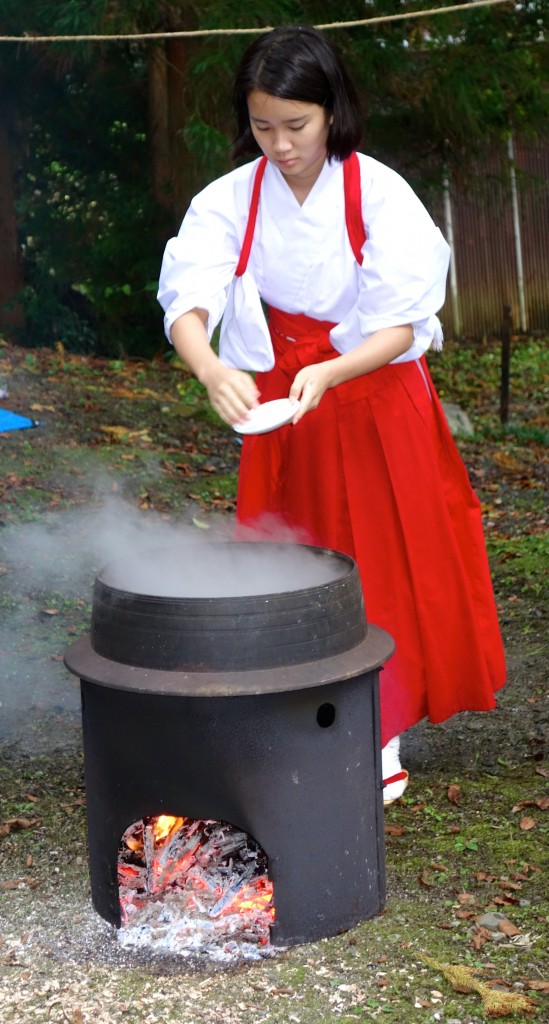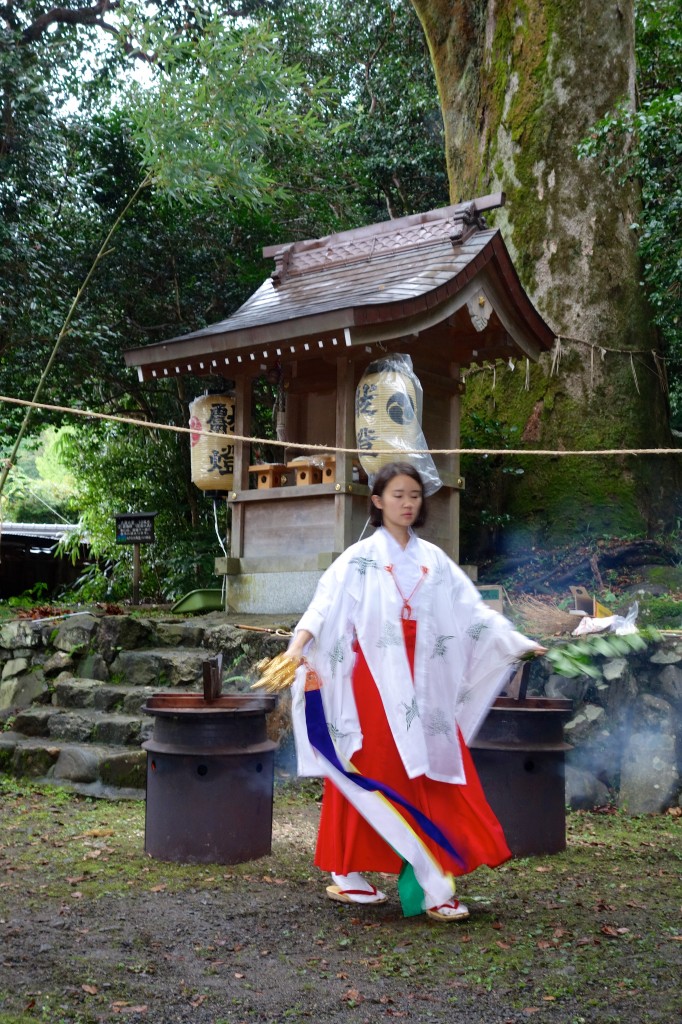
A miko shakes hot water from bamboo grass (sasa) over the surrounding area (all photos by McCullough)
Spring and autumn are busy times of year for Shinto, as festivals take place based around the rice cycle of ancient times. One such event took place this weekend in the charming village of Ohara, just north of Kyoto, and thanks go to David McCullough for providing information and photos. As a resident of the village, David is on the organising committee for religious events in the area.
The Yu no Shiki at his local shrine involves boiling water in the traditional style, as shown in the photo below. This is accompanied by a miko (shrine maiden) dancing for the pleasure of the kami in front of the hot water. Salt and saké are added to the boiling water, which is scattered around the shrine, presumably as a form of purification.
This is a wonderful example of localised rites handed down from ancient times, and it reminds me of the way that rice spirit is strewn on the ground in Korean shaman practice. In ancient Japan boiling water was used for divination, and in some cases steam created in front of an altar was used to induce the miko into spirit possession. ‘In later ages,’ says the Kokugakuin encyclopedia, ‘the boiling water was believed to possess the power of purification, and the ritual was combined with dance and transformed into a performing art.’

Adding salt to the water, symbolic of Shinto's stress on purity


Leave a Reply